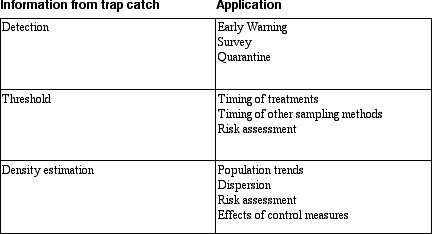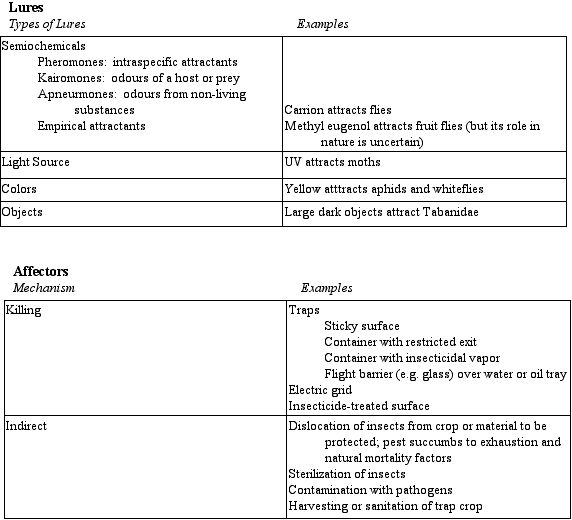Use of Synthetic Pheromones
One popular use of synthetic pheromones is for pest management. Scientists use methods such as pest monitoring, mass trapping, lure and kill, and mating disruption to determine valuable information about pests, the dangers they pose to crops, and how to solve the pest problem.
Pest monitoring is used to determine the purpose for which a certain system of pest removal is to be used. Some factors that are considered in these decisions include scientific factors and commercial factors. Other important components of monitoring systems include the attractant source, the trap and where to place it, and sufficient knowledge of the pest biology to interpret the catches. The attractant source is made up of the active ingredient and its controlled release device. The trap design is just the basic structure of the trap itself and it includes designs such as sticky plates, tent traps, wing traps, funnel traps, and milk carton traps. The three important factors of trap placement are its height, position with respect to vegetation, and the trap density. Some applications of pest monitoring traps are listed in the table below. (Insect Pheromones and Their Use in Pest Management, 1998, 263-271)

